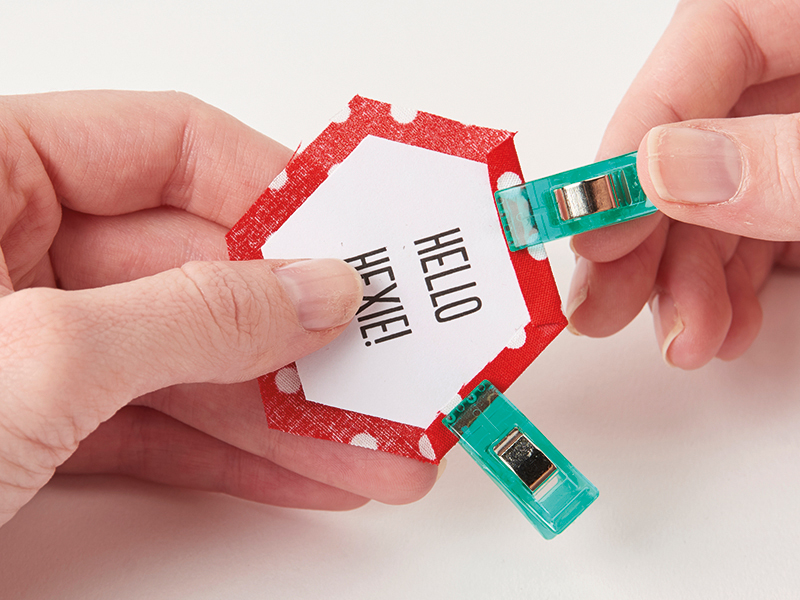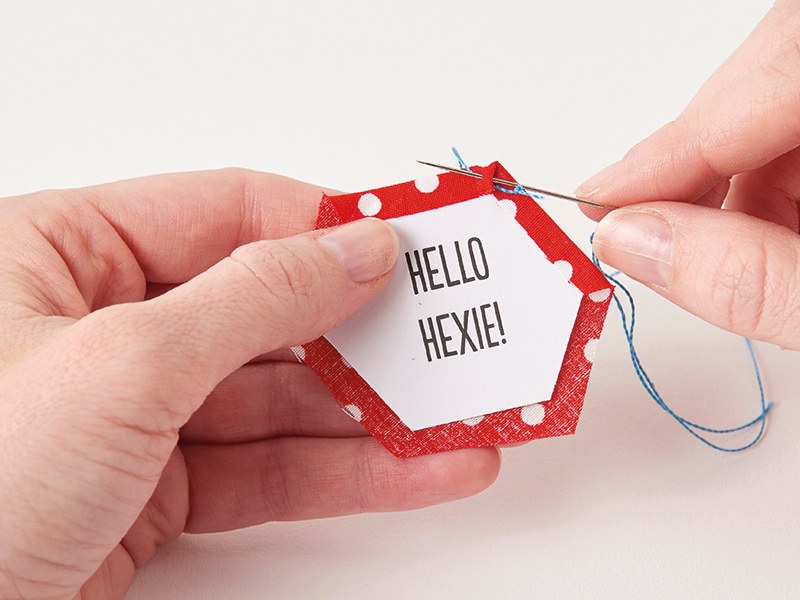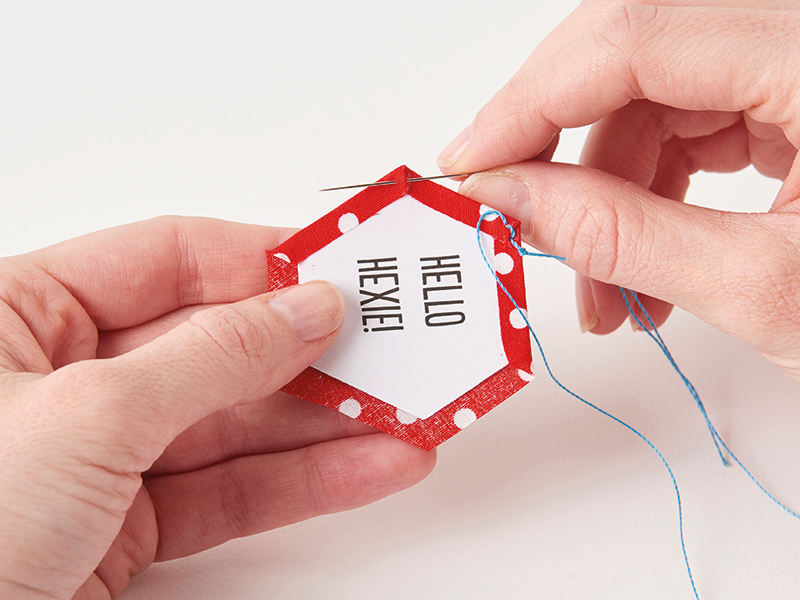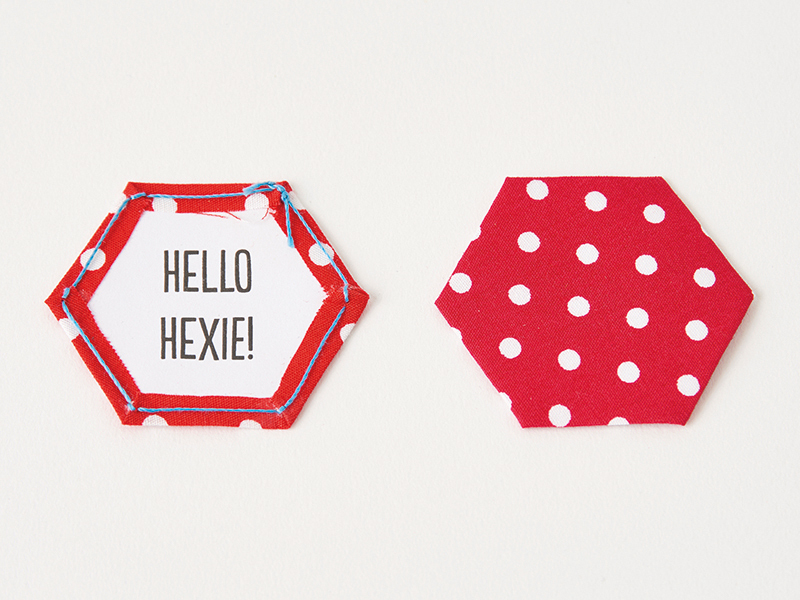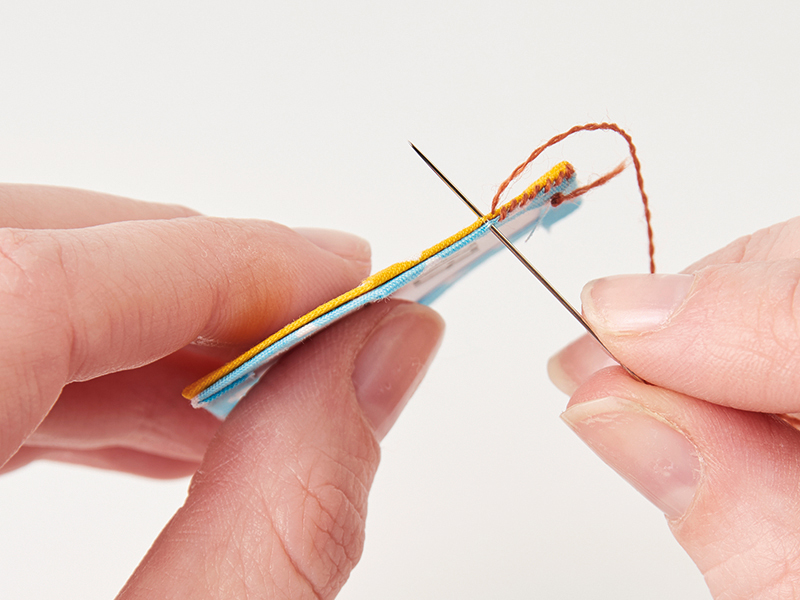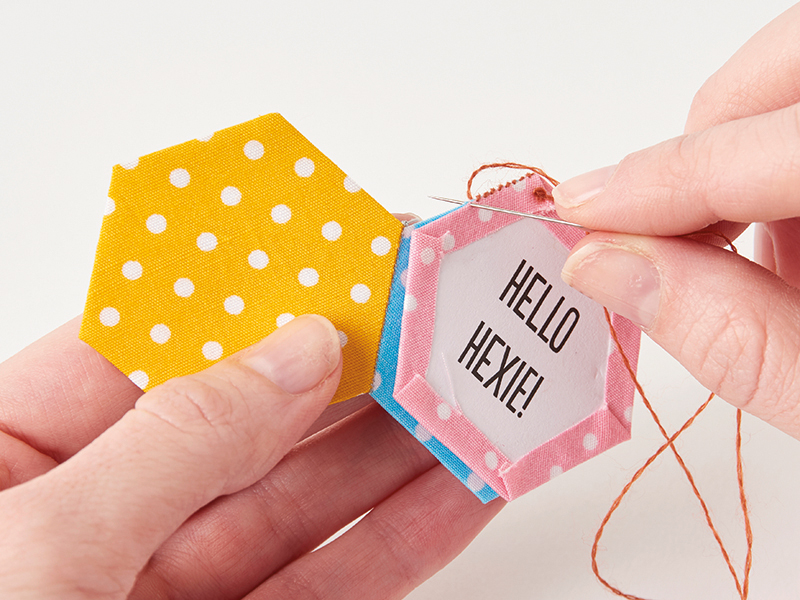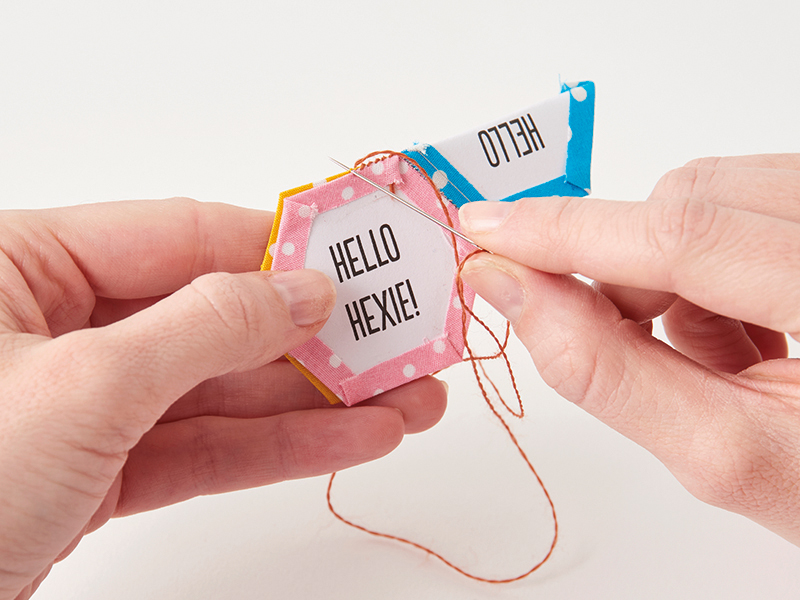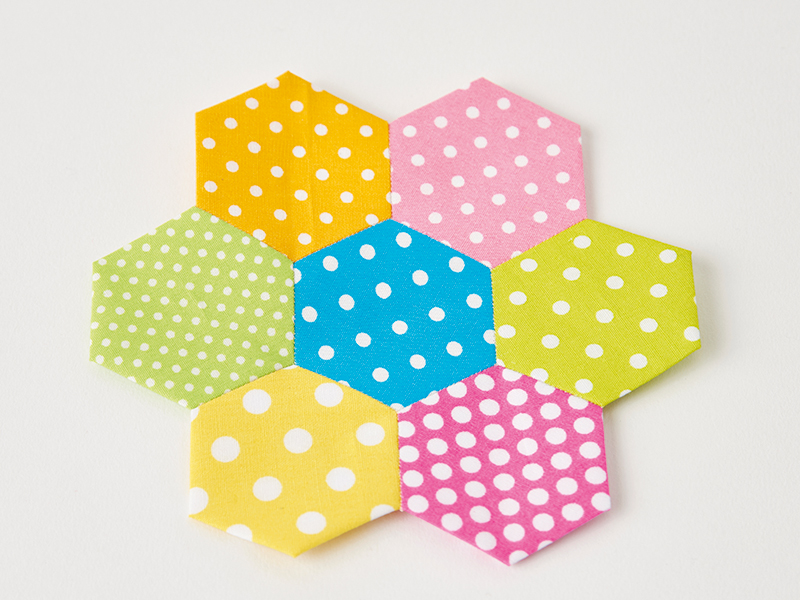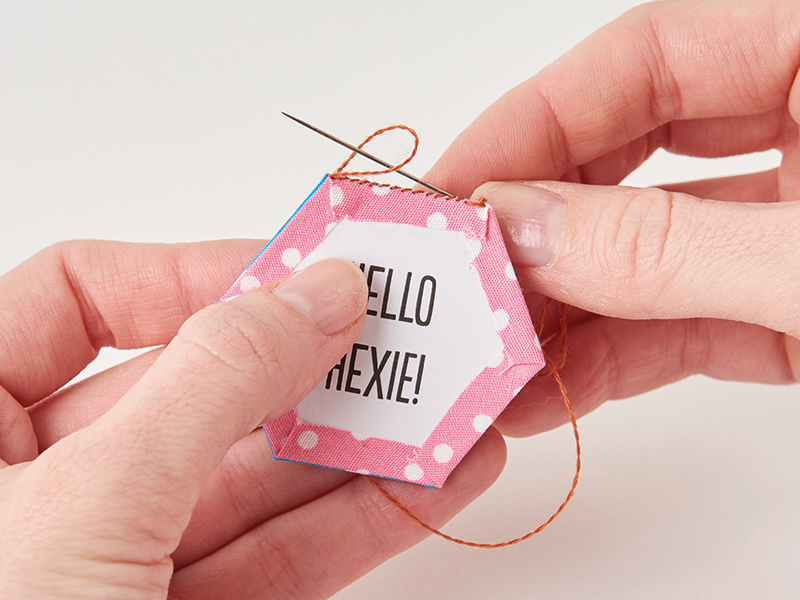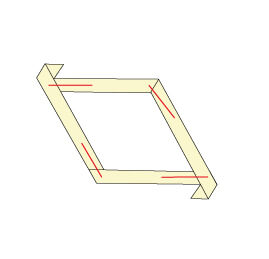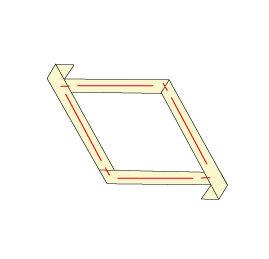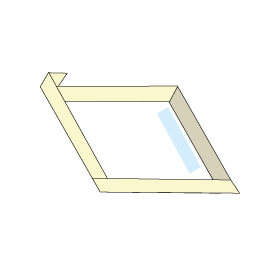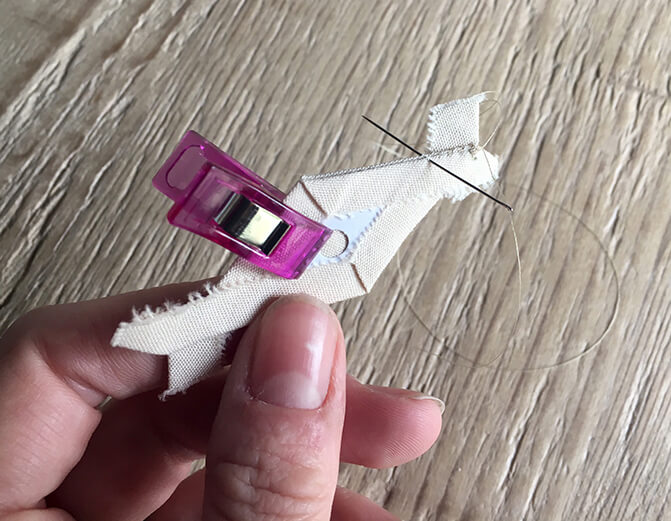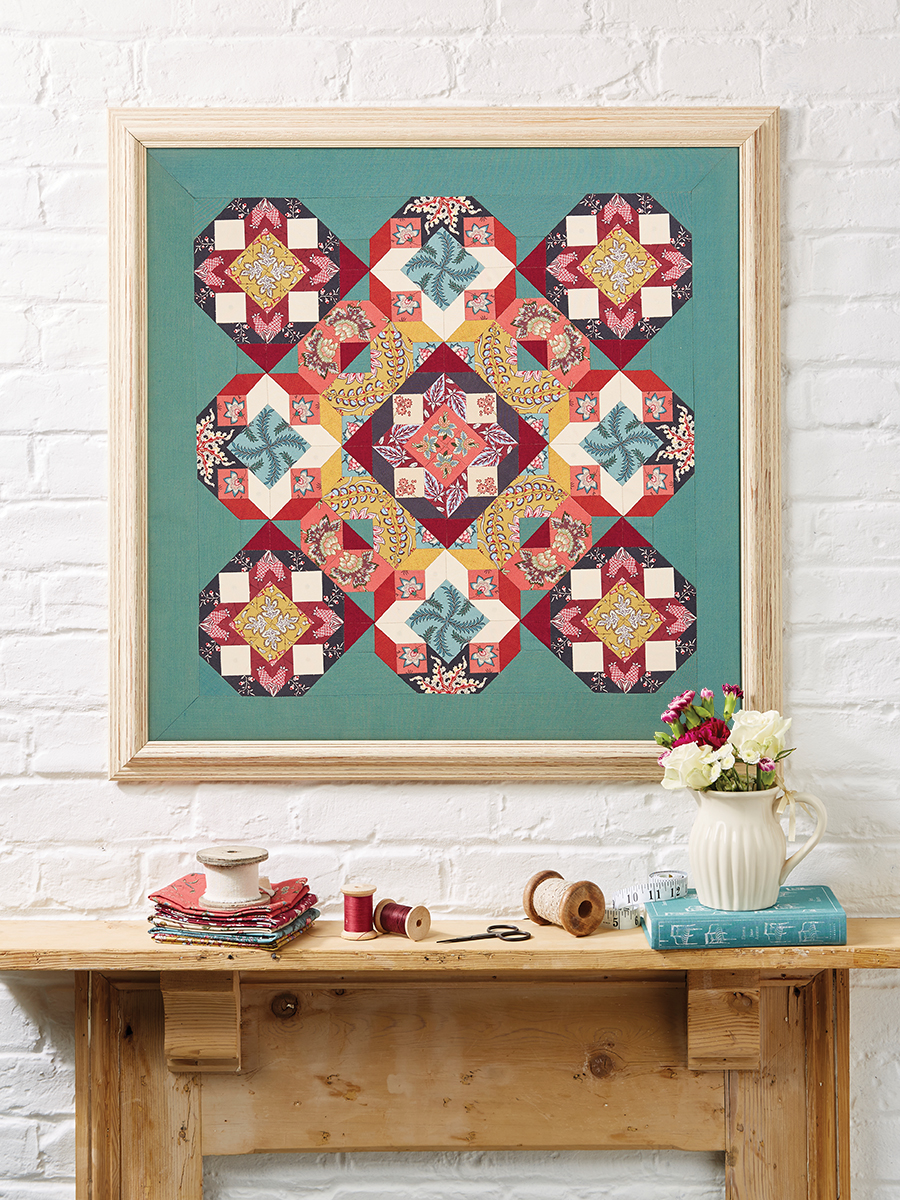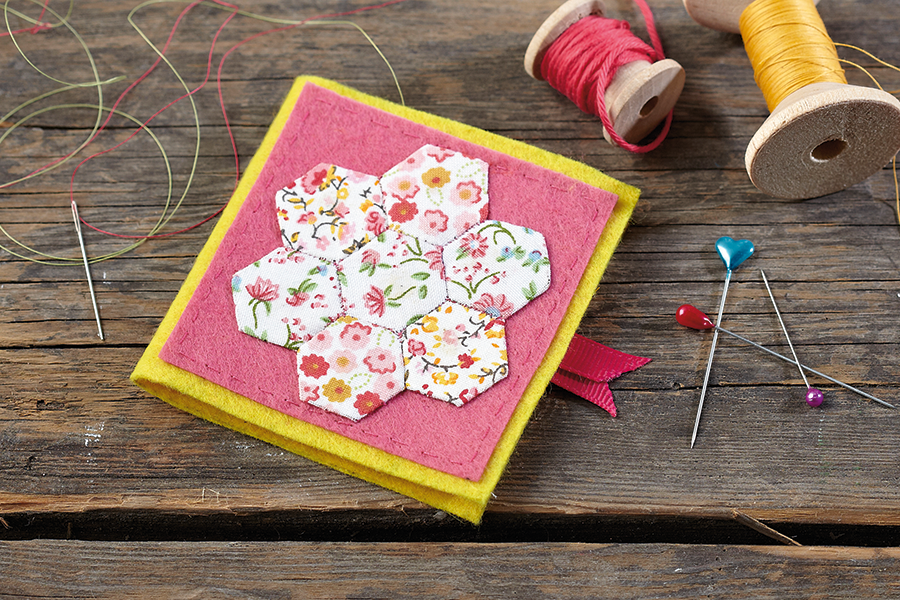Paper piecing has to be one of the most relaxing, addictive and satisfying sewing skills known to quilter-kind. We love English Paper Piecing (or EPP as it is known affectionately by quilt makers around the world) for its accuracy, portability and the mindfulness of slow stitching. It’s ideal for keeping our hands busy when we’re kept away from our sewing machines: be it on the train, visiting friends for a craft night, taking the children to swimming lessons or simply relaxing in front of the television. We've known friends take their EPP on holiday to stitch on the beach, stitch on the train and on planes (airline needle policy allowing).
This article includes:
- What is English Paper Piecing?
- Free English Paper Piecing Templates
- How to do English Paper Piecing for Beginners – a step by step guide
- What do you need to start paper piecing?
- 3 ways to baste fabric to your paper shapes
- How to finish your English Paper Piecing
- Ideas for what to make out of your English Paper Pieced hexagons
What is English Paper Piecing?
English Paper Piecing is the art of hand-sewing small fabric shapes together, wrapped around a paper template to create patchwork patterns. Quilting expert Sarah Griffiths is here to talk you through the basics of how it's done. Read on for her step-by-step guide.
Download our free English Paper Piecing templates below and read our Beginners guide to English Paper Piecing to learn how it's done. You may have come across a sister technique for English Paper Piecing called Fussy Cutting. This basically involves being selective about which part of a fabric print or pattern you cut your shapes from, so that when you join them together they form kaleidoscopic bigger patterns or simply highlight your favourite parts of the design. For more about fussy-cutting see our guide to Fussy Cut in Patchwork and for more hexagon quilt inspiration, head to our round up of our favourite Hexagon Quilt Patterns.
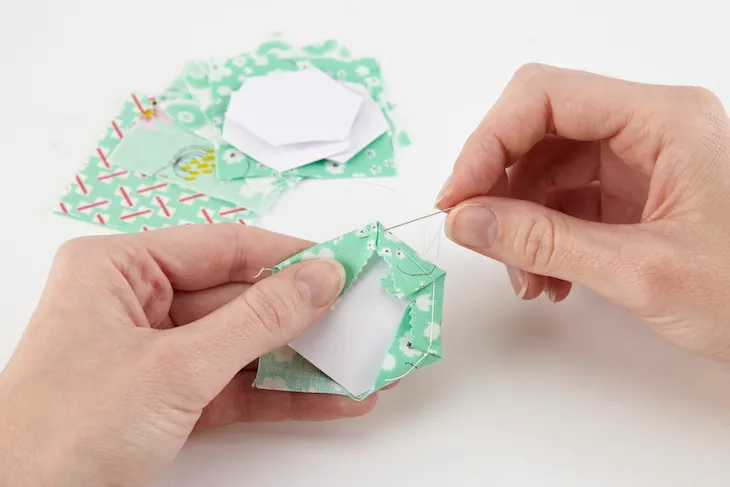
Free English Paper Piecing templates
Paper hexagon templates are your first step in sewing the sweetest of hexie patchwork effects. To sew mini hexagons, head over to our free hexagon templates post. Or if you want to try other shapes, why not try our Free Diamonds English Paper Piecing Templates or give octagons and squares a go?
Quilt School: English Paper Piecing Diamonds
EPP isn't just great for piecing together hexagons, it works a charm with all sorts of geometric shapes. Head to our special Quilt School post on how to paper piece diamonds for this cute coin purse tutorial and tips on piecing other shapes.
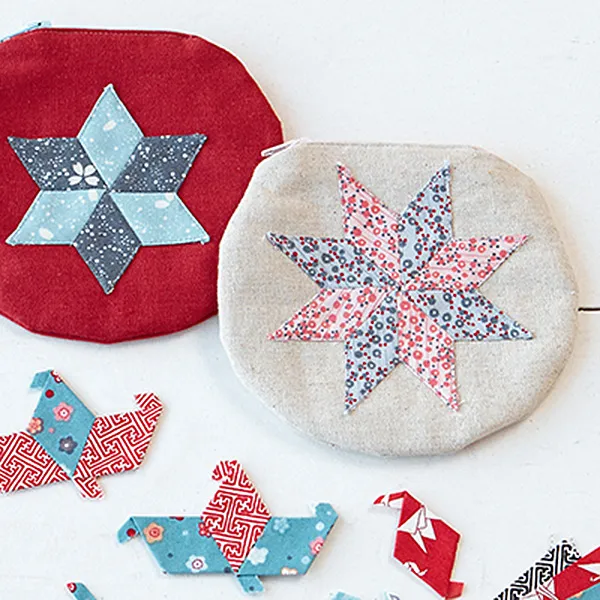
How to do English Paper Piecing for Beginners
You will need
- Hexagon English Paper Piecing Templates – download our free PDFs above or buy a pre-cut pack to save time (£9.08, Amazon)
- Paper
- Pins or quilt binding clips (a pack of 50 binding clips costs £6.99 on Amazon and they will change your life – seriously we love them!)
- Needle and thread
- Fabric
If you make your own paper templates, rather than buying them, you'll find a slightly thicker paper than usual will give you a firm edge to fold the fabric over. The size is usually measured along one side so that the edge of a 2in diamond would fit next to a 2in hexagon for example.
Which fabric to use?
Quilting cotton, Lawns and linens are all good choices for English Paper Piecing. If you choose to pre-wash your fabrics make sure they are dry, and ironed flat before you start cutting. Starch can help keep the fabric really flat and give it some structure for basting for a crisper result.
Many quilters use fabric scraps from their stash as paper piecing is a great way to use up small scraps of treasured prints, but if you want to start with a fresh fabric pull, head over to Minerva Crafts – they have a huge range of quilting fabrics to choose from.
Which threads to use?
For basting you can use anything you have, the stitches will be removed or hidden so use up something old or cheap. The thread for stitching the shapes together is more important. Use a colour that matches your fabric closely, or a neutral shade such as grey or taupe that will act as a shadow and sink into the fabrics without showing up. A 50wt is a good choice. You can't go wrong with a good Aurifil 50 weight spool of white thread (£11.95, Amazon) – it's likely to last you years – (ours has!)
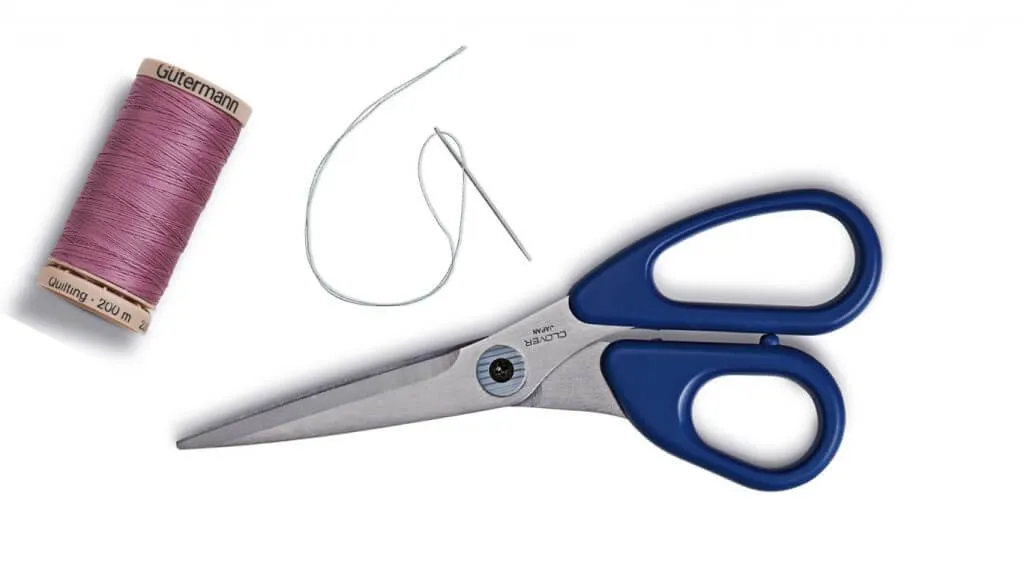
Useful extras for your English Paper Piecing kit
You will also need a needle; whatever you’re comfortable with, some pins or binding clips and some scissors for both fabric and paper. An optional supply is a fabric glue pen, which can be used for basting. A pouch or tin is really useful for transporting and keeping your shapes in order, ready for stitching on the go.
Try a Beginner English Paper Piecing starter kit
We like the selection of EPP kits on Etsy (from around £10) – just double check your kit is for English Paper Piecing, not Foundation Paper Piecing, before you buy. Foundation Paper Piecing kits involve a different method and it's a bit fiddlier and involves a sewing machine. Find out more in our guide to Foundation Paper Piecing for beginners.

